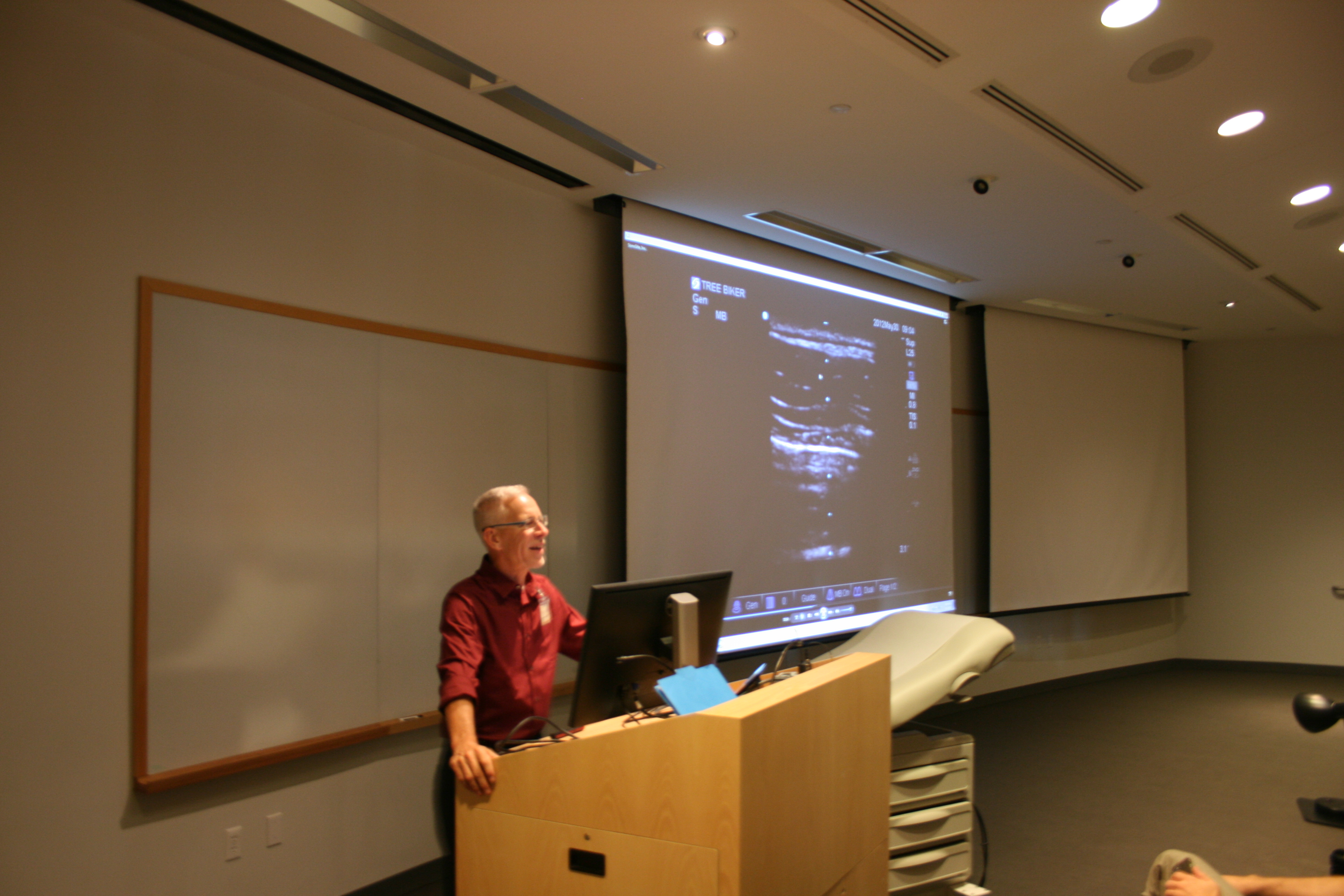Last Thursday and Friday, 47 fellows from throughout the country and 6 guest faculty from Midwest programs gathered at the University of Iowa for the 2016 Midwest Fellows Critical Care Ultrasound Symposium, organized by Dr. Gregory A. Schmidt, Professor of Pulmonary, Critical Care and Occupational Medicine.
 The symposium catered to the increasing use of bedside ultrasound by intensivists, and the subsequent need for training practitioners in proper use of the technology. Through a combination of visually rich lectures, small-group image interpretation with a faculty leader, and hands-on practice in image acquisition, the two-day course provided a foundation on which the attending fellows can continue to build their skills in point-of-care ultrasound.
The symposium catered to the increasing use of bedside ultrasound by intensivists, and the subsequent need for training practitioners in proper use of the technology. Through a combination of visually rich lectures, small-group image interpretation with a faculty leader, and hands-on practice in image acquisition, the two-day course provided a foundation on which the attending fellows can continue to build their skills in point-of-care ultrasound.
The benefits of point-of-care ultrasound, as opposed to sending patients to consultative appointments in another department, are many, according to Dr. Schmidt. In addition to allowing intensivists to integrate the ultrasound images with readings from other machines in real time, the model also cuts down on the layers of communicative separation between an intensivist’s requisition and the report he or she is then able to see on the electronic medical record.
 “The ultrasound machine is my new stethoscope,” Dr. Schmidt said. “And I wouldn’t—unless the machine was gone or broken—go to see a new patient without an ultrasound machine. It would be like going in without your tools. When I round at the beginning of the day, I take an ultrasound machine with me to every patient’s room, and I probably image at least half the patients on rounds.”
“The ultrasound machine is my new stethoscope,” Dr. Schmidt said. “And I wouldn’t—unless the machine was gone or broken—go to see a new patient without an ultrasound machine. It would be like going in without your tools. When I round at the beginning of the day, I take an ultrasound machine with me to every patient’s room, and I probably image at least half the patients on rounds.”
To help symposium attendees learn the ropes, the fellows were challenged in hands-on sessions with machines with unusable settings—forcing them to learn the ins-and-outs of the machines themselves—as well as the proper handling of the ultrasound probe. “In other words,” said Dr. Schmidt, “where do you stand? Where do you put the probe? How do you hold it? How do you orient it? How do you take an initially poor image and turn it into an ideal image?”
At the end of the two days, the fellows were given a test and provided with feedback based on their performance. “What we want to do is give the fellows the tools both to be able to use the ultrasound but also understand their limitations in their ability to acquire and interpret images,” said Dr. Schmidt.
Though the symposium is in its fourth year, 2016 marks the first year UI has served as the hosting institution; organizing it was no small feat, however. As the symposium organizer, Dr. Schmidt directed the efforts of UI administrative support to piece together the logistics of hosting an event in Iowa City, as well as the efforts of UI staff and faculty such as Fellowship Program Coordinator Amy Gingerich to communicate with attending fellows, and Drs. Tahuanty Pena, Rolando Sanchez, and Paul Nassar to help teach sessions.
“To do something like this takes administrative support. It takes money, it takes permission, willingness to support. My division director Dr. Joe Zabner has been highly supportive of bringing this teaching venue to Iowa,” he continued. By hosting the symposium at Iowa, Dr. Schmidt hopes to stake UIHC’s place in the ultrasound field, and to attract future faculty—he even managed to squeeze in a dinner social Thursday night, along with a group bicycle ride on the Clear Creek trail.
Collaborating with faculty from a number of institutions including the University of New Mexico, Rush Medical Center, National Jewish Health, University of Wisconsin, and the University of Kansas, planning the course involved a lot of debate on the content and teaching methods. As Dr. Schmidt said, “With this group we’ve worked really hard to hone the course as best we can, and that whole group should get a lot of credit for creating what I think is a really good course.”
One comment on “Ultrasound Symposium trains fellows in point-of-care use”